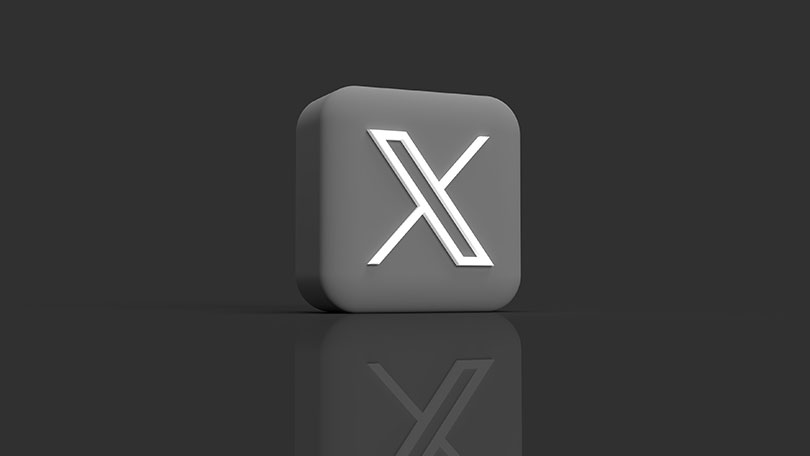
Twitter, the social media platform that revolutionized the way people communicate, has been on brands’ minds since its inception in 2006. Originally a safe, reputable source of information, buzzing with quippy tweets on real-time topics, Twitter has had high usership among almost all advertisers’ target audiences. However, after a change in ownership, coupled with a new name and overall approach, some marketers are wondering if it’s time to call it quits… or at least go quiet.
Understanding the evolution
As of July 2023, Twitter is now X, “the everything app, where everyone is increasingly connected to everything they care about.” But, it didn’t come easy. The rollout was slightly chaotic (to put it gently), and experts were quick to add their insights.
Per Slate, “Twitter, which is no longer called Twitter, is a sad shell of its former self by every conventional business metric.” An Insider Intelligence analyst echoed the sentiment, saying, “Musk hasn’t managed to make a single meaningful improvement to the platform.” And in a Mashable article dedicated to Elon Musk’s “dumbest decisions of 2023,” it’s noted that the most critical error was getting rid of the company’s globally recognized brand name.
Examining the effects
Anyone in the industry knows the social media landscape has seen many significant transformations, but none have prompted people of this magnitude to reassess their presence on a platform.
At Brogan & Partners, we’ve deleted our account, but we understand and acknowledge there’s no one-size-fits-all answer. Each brand must make an informed decision based on its goals, audience and values, and that can only come after a careful evaluation.
If you’re reconsidering the value of X and whether it’s worth investing in, read on. We’ve done the research, so you don’t have to.
- X is now worth $19 billion. This figure is down 57% from when Musk bought Twitter a little over a year ago — paying $44 billion for the platform.
- X’s monthly active users have shrunk by 15%. According to Variety, millions of users, including several celebrities, have left X. From a business perspective, NPR and PBS stepped away from the platform — the first major news organizations to do so — and The Trevor Project, one of the largest mental health organizations serving LGBTQ+ youth, closed their account as well, citing “increasing hate and vitriol.”
- Advertising revenue has plunged as much as 60%. Spending by Twitter’s top 10 advertisers, including Amazon, IBM and Coca-Cola, plummeted from $71 million in September/October 2022 to $7.1 million in February/March 2023. Most recently, Apple and Disney stopped spending on the social network, and plenty of other businesses have since followed suit. In response, Musk issued a profane statement to all who are no longer advertising: “Go f—k yourself… Go. F—k. Yourself. Is that clear?”
- Most of its workforce has been fired, laid off or lost. With impressive speed, Musk oversaw an 80% reduction in headcount, including engineers who kept the site running, moderators who kept it from being overrun with hate, executives in charge of making rules and enforcing them… and the list goes on. As a result, X has had many major outages, which could kill users’ confidence and make it more vulnerable to cybersecurity threats.
- Core features have been dismantled. Of course, the platform lost its original name and blue bird logo, but we’ve also said goodbye to core features like the iconic verification system, the focus on content moderation and the enforcement of hate speech. The things that made Twitter, Twitter, are ultimately gone, which could be why users, content creators and social media experts are saying content found on X requires a more skeptical eye. Trolling, toxic hate speech and misinformation are, of course, prevalent on the platform, and that can make it difficult to maintain a positive image.
- Organic reach and engagement rates are rapidly declining. A worldwide study by Socialinsider found the average engagement rate on X to be 0.05% (compared to 4.25% on TikTok), and Forbes reports Facebook, Instagram and Twitter have seen organic reach decline for years. With that, the amount of time, research and effort it takes to reach just a fraction of your audience on X has many brands choosing priority platforms — Brogan & Partners included.
- Threads poses a threat. According to data from Insider Intelligence, Threads will likely have far fewer monthly active users than Facebook, Instagram and TikTok, but it may have a chance to close the gap with X. Experts predict X’s monthly active users will drop to 47 million by 2025 if users continue to defect from the platform, while Threads could grow to 30 million users by that time. What’s more, Threads’ ad business in 2025 is projected to be 3x the size of Twitter’s (and it hasn’t even been monetized yet).
Considerations for the future
If you’re still struggling with a decision about X, ask yourself these three questions:
- Is your target audience still actively engaging on X? Monitor user demographics, engagement metrics and interactions to see if there are still opportunities to connect your creative with your consumers.
- Does X align with your brand’s values? Assess whether the platform’s content policies and community standards resonate with your brand’s messaging and image.
- What are the risks for your business? Analyze the potential risks associated with being on X, considering controversies, polarizing discussions or potential backlash. Determine how these factors may impact your brand’s reputation.
Should you determine X is no longer a fit for your brand, you have two options. You can cut ties completely, or you can temporarily pause the posting of organic content, but keep your account activated — just in case the platform is ever deemed appropriate again.
However, either choice gives you an opportunity to shift your focus and shine in a new arena, exploring alternative platforms and diversifying your online presence — both of which could help you effectively engage with your audience.























